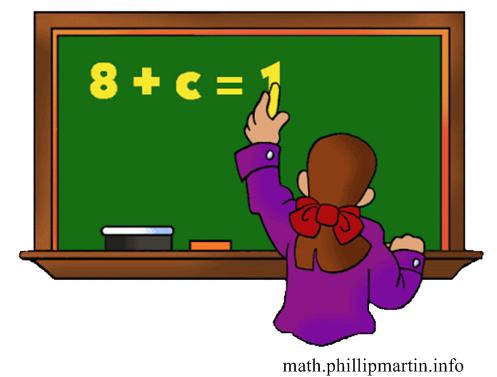 I have been meaning to focus on this aspect of mathematics for some time. It is a topic I elaborated in my “Angular Momentum” post. But I also think it has something to do with the difficulties that normal folks have with elementary math, in particular, numbers. I thought I would dub it the Cheshire Cat Paradigm, involving the Cheshire Cat’s grin.
I have been meaning to focus on this aspect of mathematics for some time. It is a topic I elaborated in my “Angular Momentum” post. But I also think it has something to do with the difficulties that normal folks have with elementary math, in particular, numbers. I thought I would dub it the Cheshire Cat Paradigm, involving the Cheshire Cat’s grin.
See the Cheshire Cat Paradigm.
(Updates 6/7/2025, 7/19/2025, 7/20/2025) Contra Concrete Algebra, James Tanton Videos, Imaginary Numbers Continue reading

 This is a logical
This is a logical  In one of our periodic FaceTime calls I found out that my granddaughter in 6th grade was interested in learning algebra and had gotten a book to help her out. Clearly this initiative to get a head start prior to the normal course curriculum excited me, so I wrote what I thought was an insightful essay on the meaning and purpose of algebra. Needless to say it was an abysmal failure.
In one of our periodic FaceTime calls I found out that my granddaughter in 6th grade was interested in learning algebra and had gotten a book to help her out. Clearly this initiative to get a head start prior to the normal course curriculum excited me, so I wrote what I thought was an insightful essay on the meaning and purpose of algebra. Needless to say it was an abysmal failure. A prevalent theme of much of popular mathematical exposition and debates about mathematics education concerns how to interest a wider population in matters mathematical. For the most part I feel that essays that try to present the “beauty” of mathematics are doomed to failure, as are most discussions of esthetics. The underlying goal of such writing is a legitimate and laudable attempt to show the appeal of math. But I fear it succeeds only with those already converted. So is there another way?
A prevalent theme of much of popular mathematical exposition and debates about mathematics education concerns how to interest a wider population in matters mathematical. For the most part I feel that essays that try to present the “beauty” of mathematics are doomed to failure, as are most discussions of esthetics. The underlying goal of such writing is a legitimate and laudable attempt to show the appeal of math. But I fear it succeeds only with those already converted. So is there another way? I have always had a tenuous relationship with the concept of angular momentum, but recently my concerns resurfaced when I did my studies on Kepler, and in particular his
I have always had a tenuous relationship with the concept of angular momentum, but recently my concerns resurfaced when I did my studies on Kepler, and in particular his  This post is the first on a meditation on the nature of mathematics as I see it. I have been thinking about this for some time, and my thoughts were again stimulated by a March 2014 article I read in Slate by Brian Palmer that attempted a popularized explanation of the mathematical concepts associated with Zeno’s Paradox. It was a laudable effort that I applaud. So it is a bit churlish of me to critique it, but I felt its misconceptions got at the heart of some fundamental ideas about mathematics that I wanted to clarify.
This post is the first on a meditation on the nature of mathematics as I see it. I have been thinking about this for some time, and my thoughts were again stimulated by a March 2014 article I read in Slate by Brian Palmer that attempted a popularized explanation of the mathematical concepts associated with Zeno’s Paradox. It was a laudable effort that I applaud. So it is a bit churlish of me to critique it, but I felt its misconceptions got at the heart of some fundamental ideas about mathematics that I wanted to clarify.